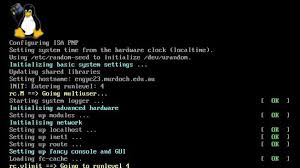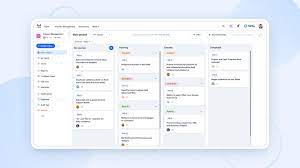Empowering Change Through Diverse Communities
The Power of Communities
Communities play a vital role in shaping our world, both online and offline. They bring people together, foster collaboration, and provide support and belonging. From local neighbourhoods to global online networks, communities have the power to create positive change and impact lives in meaningful ways.
Building Connections
Communities are built on shared interests, values, or goals. They provide a platform for individuals to connect with like-minded people, share experiences, and learn from one another. Whether it’s a hobby group, professional network, or social cause, communities offer a sense of belonging and camaraderie that is essential for personal growth and well-being.
Driving Innovation
Communities are hubs of creativity and innovation. By bringing together diverse perspectives and expertise, they can spark new ideas, solve complex problems, and drive progress in various fields. Collaborative projects within communities often lead to groundbreaking discoveries and advancements that benefit society as a whole.
Providing Support
In times of need or crisis, communities serve as a source of support and solidarity. Whether it’s offering emotional encouragement, practical assistance, or advocacy for social justice issues, communities rally together to help their members overcome challenges and navigate difficult circumstances. The bonds formed within communities create a strong support system that fosters resilience and empowerment.
Fostering Diversity
Communities celebrate diversity by bringing together individuals from different backgrounds, cultures, and perspectives. This diversity enriches the community experience by promoting understanding, tolerance, and mutual respect among its members. By embracing inclusivity and welcoming all voices, communities create an environment where everyone feels valued and appreciated.
Empowering Change
Communities have the power to drive positive change at both local and global levels. Through collective action and advocacy efforts, communities can influence policies, raise awareness about important issues, and mobilise resources to address social challenges. By uniting around common goals and values, communities can effect lasting change that improves the lives of individuals and strengthens society as a whole.
Exploring Communities: Definitions, Examples, and Types
- What is the best definition for communities?
- What are communities give examples?
- What is communities and example?
- What is the best definition of communities?
- What is in a community?
- What are communities examples?
- What are the four types of community?
- What are the 4 types of community?
- What are 5 communities?
What is the best definition for communities?
Communities can be defined as groups of individuals who come together based on shared interests, values, or goals to form a sense of belonging and connection. These groups can range from local neighbourhoods to global online networks and play a vital role in fostering collaboration, providing support, driving innovation, and empowering change. Communities celebrate diversity by embracing individuals from different backgrounds and perspectives, creating an inclusive environment where everyone’s voice is valued. Ultimately, communities serve as pillars of society that shape our world and create meaningful connections that enrich the lives of their members.
What are communities give examples?
Communities are groups of individuals who come together based on shared interests, values, or goals. They provide a sense of belonging and support for their members. Examples of communities include local neighbourhood associations, online forums dedicated to specific hobbies or interests such as photography or gardening, professional networks like industry associations or LinkedIn groups, social advocacy groups working towards a common cause such as environmental conservation or human rights, and cultural communities that celebrate shared heritage and traditions. These diverse examples highlight the importance of communities in fostering connections, driving innovation, providing support, and empowering positive change in society.
What is communities and example?
Communities are groups of individuals who come together based on shared interests, values, or goals to create a sense of belonging and connection. An example of a community is a local gardening club where members gather to share gardening tips, exchange plants, and organise community events. This community provides a space for gardening enthusiasts to connect with like-minded individuals, learn from each other’s experiences, and foster a sense of camaraderie around their shared passion for gardening. By participating in this community, members can build relationships, support each other’s gardening endeavours, and contribute to the collective knowledge and enjoyment of gardening.
What is the best definition of communities?
Communities can be defined as groups of individuals who come together based on shared interests, values, or goals to create a sense of belonging and connection. These groups can form in various settings, from local neighbourhoods to online platforms, and play a crucial role in fostering collaboration, support, and diversity. Communities provide a space for individuals to interact, exchange ideas, and work towards common objectives, ultimately contributing to personal growth, social cohesion, and positive change within society.
What is in a community?
A community is more than just a group of individuals living in the same area; it is a collective entity bound by shared interests, values, and goals. Within a community, there exists a sense of belonging and camaraderie that fosters connections and relationships among its members. In addition to providing social support and a sense of identity, communities offer opportunities for collaboration, mutual aid, and cultural enrichment. They serve as hubs of interaction where ideas are exchanged, traditions are upheld, and collective action is taken to address common challenges. Ultimately, what defines a community is the shared sense of purpose and unity that brings individuals together to create a cohesive and vibrant social network.
What are communities examples?
Communities come in various forms and serve diverse purposes. Some examples of communities include neighbourhood associations, online forums, religious groups, sports clubs, academic societies, and cultural organisations. These communities bring together individuals with shared interests, values, or goals to connect, collaborate, and support one another. Whether it’s a local community garden fostering environmental awareness or an online community dedicated to discussing technology trends, each example showcases the power of communities in creating a sense of belonging and driving positive change.
What are the four types of community?
Communities can be categorised into four main types based on their characteristics and functions. Firstly, geographical communities are defined by physical proximity, where individuals living in the same area form connections and relationships. Secondly, communities of interest bring together individuals with shared hobbies, passions, or beliefs, fostering bonds around common interests. Thirdly, communities of practice consist of professionals or enthusiasts in a particular field who collaborate to enhance their skills and knowledge. Lastly, virtual communities exist online, connecting individuals across geographical boundaries through digital platforms and shared interests. Each type of community plays a unique role in society, providing support, collaboration, and a sense of belonging to its members.
What are the 4 types of community?
Communities can be categorised into four main types based on their characteristics and functions. The first type is geographical communities, which are defined by physical proximity and shared local resources. These communities often include neighbourhoods, villages, and towns where residents interact and support each other in their daily lives. The second type is communities of interest, where individuals come together based on shared hobbies, passions, or beliefs. These communities can revolve around activities such as sports, arts, religion, or environmental causes. The third type is communities of practice, which consist of professionals or enthusiasts who collaborate to improve their skills and knowledge in a specific field. These communities often share best practices, exchange ideas, and mentor one another to enhance their expertise. Lastly, virtual communities exist primarily online and connect individuals from diverse locations based on common interests or goals. These digital communities utilise technology to facilitate communication, collaboration, and support among members who may never meet in person but form strong bonds through shared experiences and interactions.
What are 5 communities?
Communities come in various forms, each serving a unique purpose and bringing people together around shared interests or goals. Five examples of communities include online gaming communities, where gamers connect to play and discuss video games; local neighbourhood communities, fostering relationships among residents and promoting a sense of belonging; professional networking communities, providing opportunities for career growth and collaboration within specific industries; hobbyist communities, uniting enthusiasts around common interests such as photography or gardening; and support groups, offering emotional assistance and solidarity to individuals facing similar challenges or experiences. These diverse communities highlight the importance of connection, collaboration, and support in enriching people’s lives.












